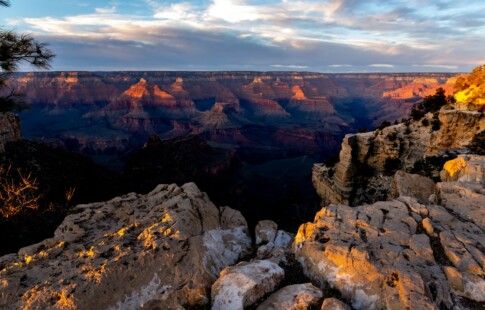
4 of the Most Endangered Animals in the US
We are reader-supported. When you buy through links on our site, we may earn affiliate commission.
A list of endangered animals conjures images of rhinos, elephants or gorillas. These species get worldwide attention and a significant amount of funding. However, you may be interested to know there are over 500 endangered animals native to the US, and so many more are already gone forever.
These species are disappearing because of climate change, population and farming expansion and other disturbances to their fragile ecosystems. The US Fish and Wildlife Service, a government agency whose sole responsibility is the conservation and preservation of our wildlife, does its best to rehabilitate and protect endangered species.
Yet, despite their best efforts, 23 species were declared extinct in September of 2021. Resources previously invested in protecting those 23 will now go to saving others. At the top of the list are four of the most endangered animals in the US.
1. Red Wolf
The red wolf was once found throughout the entire southeastern US and as far north as Pennsylvania. Now, they’re limited to a small section of territory in North Carolina. The red wolf is critically endangered and the most endangered wolf in the world, with only 10 left in the wild and around 250 in different breeding programs like the Endangered Wolf Center.
2. Florida Panther
Another carnivore on the list, the Florida panther, could be found from Florida to Louisiana and up into Arkansas. However, there’s now only a small population of between 120 and 130 left in southern Florida. This subspecies of mountain lions are very territorial and typically only come together to mate and raise young before going their separate ways. As such, they need large amounts of land, which has been slowly taken over by new construction. Most Florida panthers now live in protected swampland like the Everglades National Park and Big Cypress National Preserve.
3. California Condor
In 1987 the California condor almost went extinct — having only 27 of these carrion birds left. Conservationists collected the last birds and took them to a captive breeding program. Five years later, they began releasing them back into the wild. Recently, wildlife officials just celebrated the hatching of the 1,000th chick since the beginning of their efforts. However, the species is still endangered, with around 500 total birds living. Their biggest threat is lead shrapnel in the carcasses they scavenge.
4. Black-Footed Ferret
The black-footed ferret is in danger of extinction mainly due to the eradication of its primary food source. They get 90% of their nutrition from prairie dogs which have been overhunted because they’re a farming pest. The expansion of agricultural land has destroyed their homes and taken away most of their diet.
The black-footed ferret population was doing so poorly scientists thought they were extinct in 1979, but a small group of them turned up in Wyoming. Wildlife workers brought all 24 to a captive breeding program, where they were later reintroduced to the wild. There are now around 300 living in the wild, but scientists suggest there need to be 3,000 to recover the species.
What Can You Do?
While protecting these creatures and the others on the list of 500 most endangered animals in the US may seem out of your control, there’s plenty you can do right now to make a difference. One of the best ways to help is to learn about animals in your area facing extinction. You can also visit conservation centers and wildlife preserves to learn more and support the work being done. Small changes to the way you live can make a big impact on the status of these animals.
Share on
Like what you read? Join other Environment.co readers!
Get the latest updates on our planet by subscribing to the Environment.co newsletter!
About the author
Jane Marsh
Starting from an early age, Jane Marsh loved all animals and became a budding environmentalist. Now, Jane works as the Editor-in-Chief of Environment.co where she covers topics related to climate policy, renewable energy, the food industry, and more.





